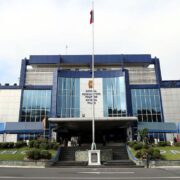Agri department reviews African swine fever plan

The Department of Agriculture (DA) is reviewing a nationwide plan to curb the spread of African swine fever (ASF) by enhancing the guidelines on transporting pork and its by-products nationwide. The DA issued Special Order No. 615 to form a technical committee to review the national zoning and movement plan that outlines the requirements for the movement of swine and related commodities in different zones. Among other concerns, the panel will discuss and study the proposed approaches or strategies to strengthen safe and efficient movement of live pigs and pork as well as pork products and by-products.
The panel is tasked to review the current implementation of DA’s Administrative Order (AO) No. 2, which prescribes certain measures to transport swine commodities.
Further, the committee will craft guidelines and protocols relative to amendments on the zoning and movement plan, subject to the Agriculture Secretary’s approval.
Promulgated in 2022, the AO amended a previous directive that classified each town or city based on risk of disease transmission and its proximity to ASF-affected areas.
“High risk” areas are those with an extreme likelihood for disease introduction, transmission and spread of ASF due to the presence of presumed risk factors.
“Moderate risk” areas refer to those with a potential likelihood for disease introduction and transmission but no risk mitigation measures are in place. Meanwhile, “low risk” areas pertain to those with less likelihood for disease introduction because of a robust surveillance system in place.
The order has different colored zones —a red (or infected) zone will include towns or cities with confirmed outbreaks or cases. It noted that areas in the red zone may reach or expand across the boundary of the adjacent city or municipality.
A pink (buffer) zone is a town or city where ASF is not detected but demarcated immediately around the red zone when local authorities confirm that this particular area has been infected. The DA considers the National Capital Region as a pink zone.
Places where the animal disease is not detected but close to areas in the pink zone are placed under the yellow (surveillance) zone. They are considered high risk areas.
A light green (protected) zone is an area where ASF is not detected. It is considered to be a moderate risk area. — INQ

















